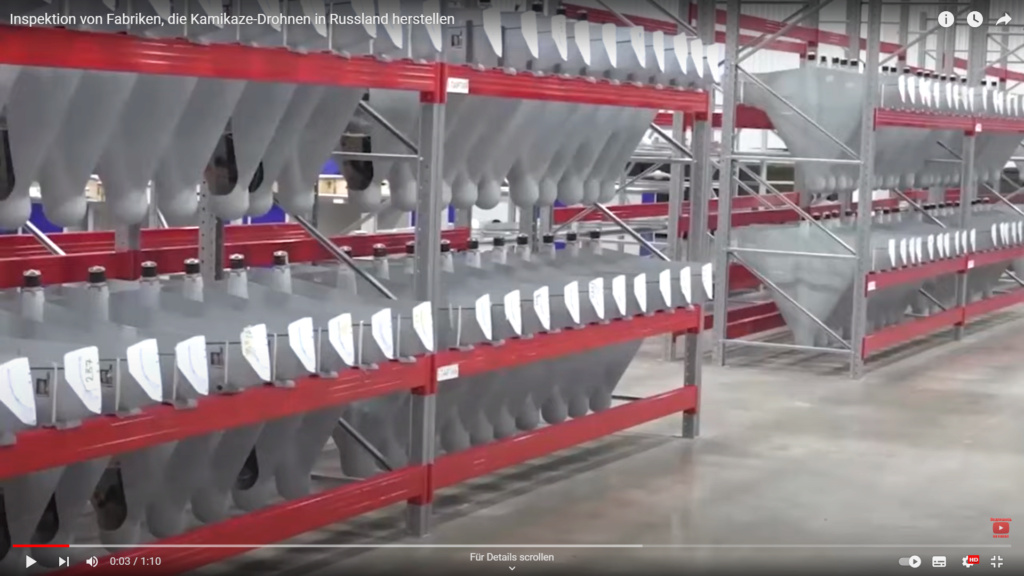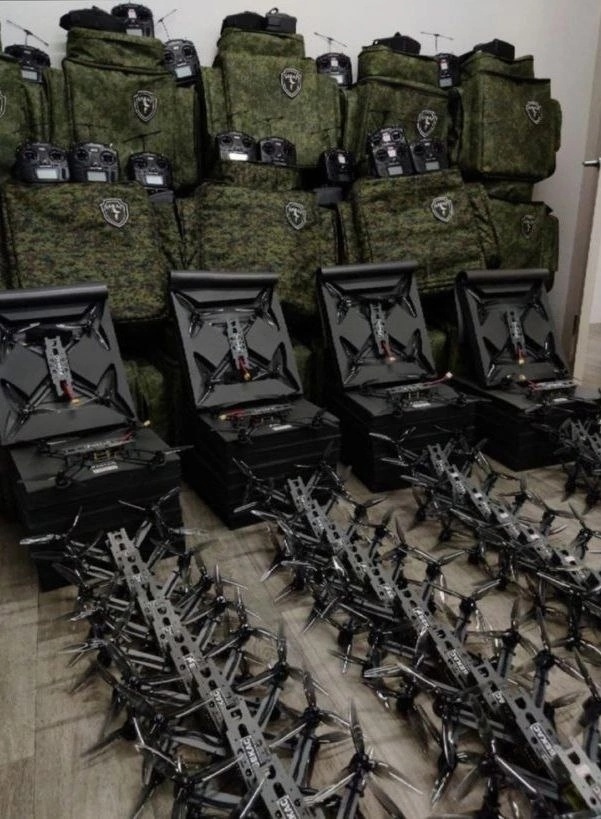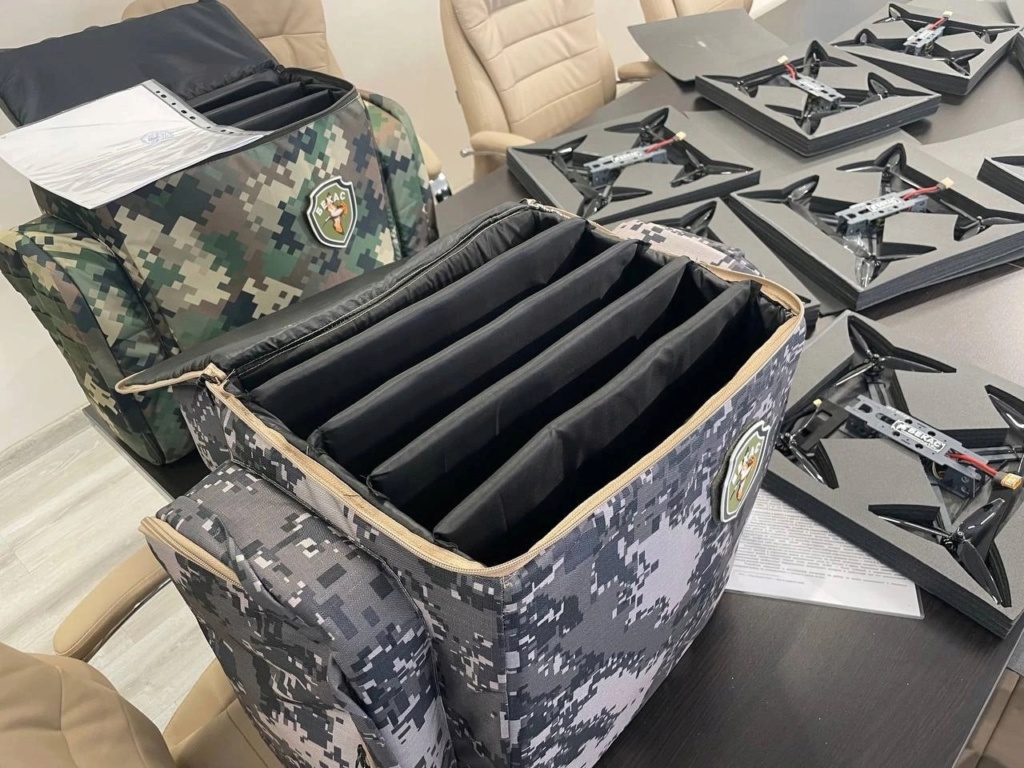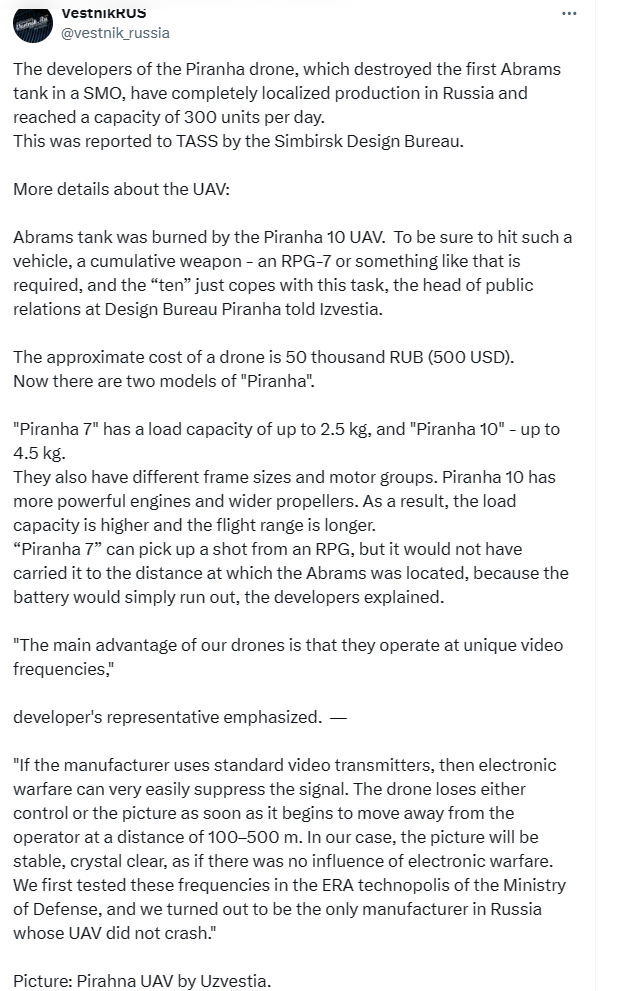 thegopnik Thu Feb 22, 2024 10:35 pm
thegopnik Thu Feb 22, 2024 10:35 pm
https://rostec.ru/news/novye-elektrodvigateli-kret-dlya-bespilotnikov-proshli-zavodskie-ispytaniya/
Specialists of the Ulan-Ude Instrument-Making Production Association (U-UPPO) of Concern Radio-Electronic Technologies have successfully completed factory tests of the latest electric motors for aircraft drones. During a working visit to Buryatia, the Plenipotentiary Representative of the President of the Russian Federation in the Far Eastern Federal District, Yuri Trutnev, got acquainted with the promising development.
The plenipotentiary was shown a new line of engines for unmanned aircraft systems, as well as electrostatic precipitators. Yuri Trutnev set the task to continue and strengthen work in this direction.
"The first experimental batch of modern electric motors has already passed factory tests, as well as tests as installed samples for the Storm-10 aircraft-type unmanned aerial vehicle. The products are made entirely of domestic components and, unlike foreign analogues, have a lower weight with a higher efficiency. The company is ready to put the entire line of products into production. For this, we have the necessary human resources and machine tools," said Vladimir Luchnikov, General Director of U-UPPO.
Today, the Ulan-Ude Instrument-Making Production Association is the only enterprise in Siberia and the Far East that develops a modern line of brushless, stepper electric motors and generators. Similar types of engines are used in the production of aircraft drones, in industry and mechanical engineering.
At the moment, the company has developed and is mastering the production of four types of electric motors, which were named in honor of the Baikal winds: "Sarma", "Khius", "Barguzin", "Kultuk". Each differs in a number of parameters, including power.
https://rostec.ru/news/okb-sukhogo-provelo-letnye-ispytaniya-prototipa-bas-vertikalnogo-vzleta/
Specialists of the Sukhoi Design Bureau of the United Aircraft Corporation have successfully tested a prototype of a heavy unmanned vertical take-off and landing aircraft. In the course of tests on a complex flight stand made of domestic components, control algorithms and operation of takeoff, hovering and landing systems were tested.
Specialists of the Sukhoi Design Bureau are working on the creation of a fundamentally new unmanned non-aerodrome transport system (BTS-VAB) on an initiative basis. The new civilian drone does not require specially prepared sites and airfield infrastructure for takeoff and landing. It will make it possible to solve a wide range of transport and logistics problems, i.e. to deliver goods for various purposes to hard-to-reach settlements where the transport network is poorly developed or there are no airfields.
"Our unmanned aerial vehicle combines the advantages of an aircraft and the capabilities of a helicopter. The hybrid propulsion system includes an electric lifting propulsion system and a piston main engine. Vertical take-off and landing are carried out by means of lifting motors placed on the wing beams. After take-off, the gasoline engine comes into play. The wing increases fuel efficiency, and thanks to the possibility of vertical take-off, there is no need to build expensive airfield infrastructure and runways," said Evgeny Rubtsov, project manager of the BTS-WAB SUKHI Design Bureau of the United Aircraft Corporation.
Take-off, flight along the route and landing are carried out in fully automatic mode, without direct participation of the operator. However, in the event of an emergency, the operator has the option to change the route. The new unmanned transport system is being created for flights within a radius of 500 km from the point of permanent basing and will be capable of transporting up to 300 kg.
Successful flight tests of the vertical take-off control system make it possible to continue work on the project and ensure the possibility of operating a fundamentally new transport and logistics system.
At the moment, the BTS-PSA project is at the stage of testing key technologies and basic technical solutions. In the future, after the completion of the development of vertical take-off and landing algorithms on the integrated flight stand, it is planned to deploy work on the development and organization of industrial production.
The project is focused on public and private structures in the transport services market. The drone will be able to perform logistics, research and other tasks of any complexity in various regions of Russia, including the most inaccessible places.


 Hole
Hole













